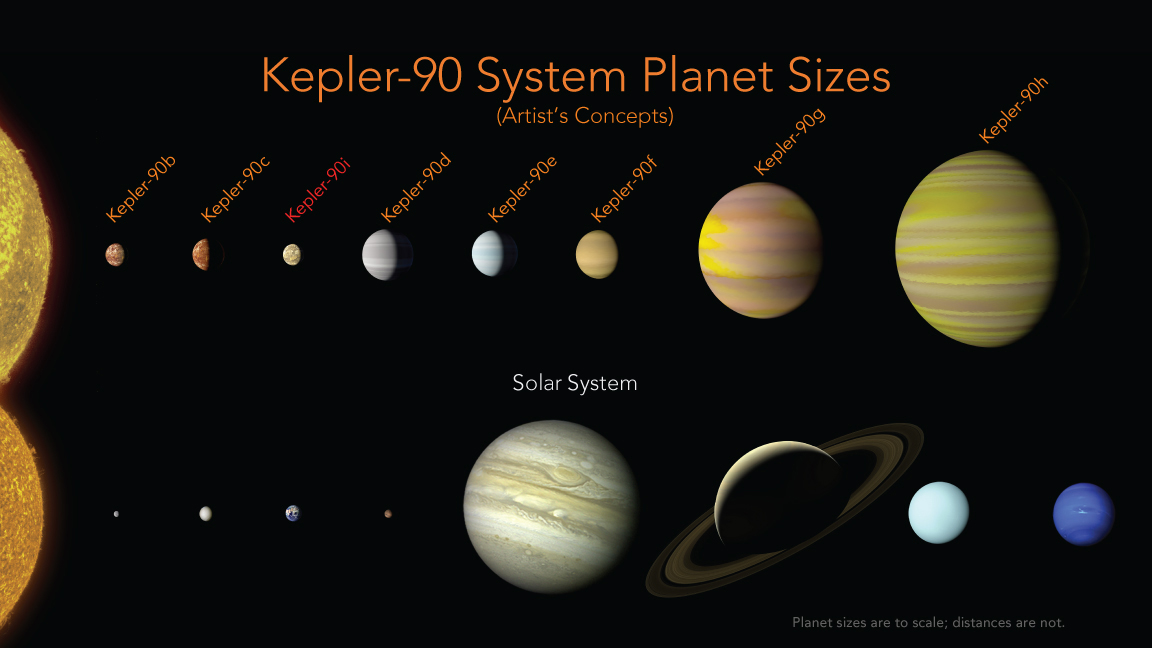 EMERGING TECH
EMERGING TECH
 EMERGING TECH
EMERGING TECH
 EMERGING TECH
EMERGING TECH
NASA announced today that it has discovered two new exoplanets thanks to a neural network developed by Google LLC’s artificial intelligence team.
One of the new planets orbits a Sunlike star in a distant system called Kepler-90 (pictured), which is 2,545 light years from Earth. Astronomer Andrew Vanderburg described Kepler-90 as “a mini version of our solar system,” with smaller planets orbiting close to the star while the larger planets are more distant. With NASA’s new discovery, it’s now apparent that the same number of planets orbit Kepler-90 as our own Sun.
Although the two planets are a new discovery, NASA had already spotted them without realizing it. The information was buried within four years worth of data captured by NASA’s Kepler satellite, whose mission is to search for Earth-like exoplanets in the so-called “habitable zones” of the Milky Way galaxy.
Over the years, Kepler has detected 35,000 possible planetary signals, a data set too large to sift through manually. NASA had its own automated systems in place that narrowed the data down to the likeliest candidates, but the agency said that this system could sometimes miss weaker signals. The two planets announced today went unnoticed until Vanderburg and Google engineer Christopher Shallue decided to comb through the data using machine learning and Google’s neural network.
“In my spare time, I started googling for ‘finding exoplanets with large data sets’ and found out about the Kepler mission and the huge data set available,” said Shallue. “Machine learning really shines in situations where there is so much data that humans can’t search it for themselves.”
After training the network using 15,000 vetted Kepler signals, Vanderburg and Shallue analyzed nearly 1,000 weak signals in systems already known to have planets when they made their discovery. Vanderburg noted that the neural net is not perfect and still detects false positives, but it can also detect more real planets that have been missed. “It’s like sifting through rocks to find jewels,” Vanderburg said. “If you have a finer sieve, then you will catch more rocks but you might catch more jewels, as well.”
Today’s discovery demonstrated the potential for machine learning outside of computer science, and NASA said it expects to see more discoveries made with AI in the future.
“Just as we expected, there are exciting discoveries lurking in our archived Kepler data, waiting for the right tool or technology to unearth them,” said Paul Hertz, director of NASA’s Astrophysics Division in Washington. “This finding shows that our data will be a treasure trove available to innovative researchers for years to come.”
THANK YOU